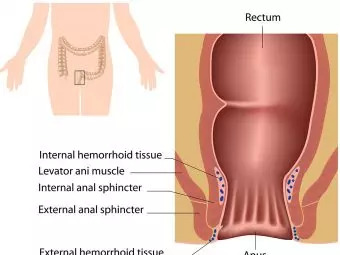
Image: iStock
Teen pregnancy poses health risks for teen mothers and their babies and adversely impacts their families and society. Read the post to know about the ways of teen pregnancy prevention.
In the US, 10% of females between the ages 15 and 19 conceive every year. These pregnancies are mostly unplanned and occur outside marriage. However, since 1991, the teen pregnancy rate has fallen by 25% (1).
According to a study report by the Centers for Disease Control and Prevention (CDC), the rates of teenage births in the US among females aged 15 and 19 years reached a record low of 15.4 births per 1000 in 2020 as compared to 16.7 births per 1000 in 2019. This represents a decrease of almost 8% in the teenage birth rate. However, teen pregnancies are still a global problem.
Teen pregnancies are a global problem. According to the World Health Organization (WHO), they usually occur in poor communities lacking education and employment. They are also an outcome of child marriage, limited knowledge of contraception, inability to get contraceptives, and sexual violence (2).
Dr. Jennifer Ashton, a New York-based obstetrician-gynecologist, says, “Teenage pregnancy is a social issue because it affects not only the teenage parents and their children, but also the wider society. It can lead to higher poverty rates, increased healthcare costs, and decreased economic productivity. It can also lead to increased crime rates and decreased educational attainment.”
12 Ways To Prevent Teen Pregnancy
1. Educate about sexuality
Image: IStock
Teenagers may lack sexual education and be unaware of preventing unwanted pregnancies and sexually transmitted diseases (STDs). They may also indulge in unprotected sexual activity due to peer pressure (3).
How to help:
- Provide sex education to adolescents.
- Support youth development programs among adolescents to talk openly about their feelings and experiences related to sexuality.
- Educate them on topics, such as HIV, STDs, and contraception.
- Bring families and communities together to address topics on sexuality without any socio-cultural resistance (3).
- Talk about the health risks of unprotected sex and teenage pregnancies (1).
 Quick fact
Quick fact2. Increase the use of contraceptives
According to WHO studies conducted in China, India, Kenya, Thailand, and other countries, adopting effective contraceptive methods (condoms, hormonal and emergency contraceptives) can help prevent teenage pregnancies. However, most adolescents are either unable to buy contraceptives or are unaware of the ways to use them (3).
How to help:
- Spread awareness in the field of effective contraceptive usage.
- Shed social stigma and educate youth on contraception.
- The American Academy of Family Physicians, the American Academy of Pediatrics, and the American Medical Association suggest physicians and healthcare providers offer guidance about contraceptives and sexual behavior (1).
3. Reduce forced sex
Gender norms can result in forced sex of girls as per studies conducted in countries, including Botswana, Kenya, and India (3).
How to help:
- Empower girls by offering them support and protection.
- Create effective strategies that teach life skills, build self-esteem, and improve social networks.
- Make efforts to change social norms and attitudes towards forced sex and sexual violence prevailing in society (3).
4. Prevent early marriage
Image: Shutterstock
Around 14% of girls in developing countries, such as Afghanistan, India, Kenya, and Nepal, are married before 15. Early marriage leads to early pregnancy and poor reproductive health. Girls who are married early also face poverty and under-education, affecting their families’ futures (3).
How to help:
- Send girls to school, so they are less likely to get married early. Education helps them take care of their families in a better way and positively impact society (3).
- Encourage teenagers to focus on their career goals and stay away from distractions (5).
5. Monitor the influence of media
In the US, one in three television programs emphasizes sexual behavior. Research shows that watching television programs depicting sexual behavior causes teens to indulge in non-marital sexual activity from an early age (6).
How to help:
- Monitor the type of content children watch, read, or listen.
- Discuss what they are learning from these programs (5).
- In developed countries, including France, the Netherlands, and Germany, teenage pregnancies are much lower than in the US because they promote low-risk sexual activities through national media campaigns (6).
6. Counsel male adolescents
Male teenagers experience sexual activity before female teenagers, and they tend to have more partners, yet they exhibit fewer reproductive concerns. Most health clinics and adolescent pregnancy prevention programs focus on girls rather than boys (1).
How to help:
- Teen pregnancy can be effectively addressed when educational programs focus on boys and girls.
- Inform male adolescents about sexual health, risky behaviors, and STIs.
- Encourage adolescent boys to use condoms to prevent pregnancies and diseases. Educate them about other methods of contraception and postcoital contraception.
- Help teenage boys understand their responsibilities as a partner (1).
7. Provide career counseling
Many girls marry early because of their poor economic conditions. Therefore, programs that focus on career counseling can encourage them to study and support their families rather than marry early (6).
How to help:
- Counsel girls from weaker financial backgrounds about educational and employment opportunities.
- In India (close to Delhi), recruiters held three annual sessions for young women in 80 villages and informed them about employment opportunities and strategies for applying for jobs. These sessions helped 76 to 81% of women enroll for a diploma and delay marriage and pregnancy (7) (8).
8. Abstinence education
Abstinence is the choice to not indulge in sexual intercourse to help prevent pregnancies. Most teenagers decide to delay having sex until they are older. This is a responsible decision, and youth must adhere to it without being influenced by peer pressure (9).
How to help:
- Encourage youth to stay away from drug and alcohol abuse.
- Help teens choose friends and partners who respect their decision of abstinence (9).
- The Michigan Abstinence Program aims to improve teen health by abstaining from sexual activity or other risky behaviors, such as using drugs, alcohol, or tobacco (10).
9. Insurance for contraception
Image: IStock
Teenagers may not use contraceptive methods because they cannot afford them. Most private insurance plans do not offer coverage for contraception.
How to help:
- Contraception should be easily accessible to teenagers.
- Teen pregnancy rates are relatively lower in the Netherlands, Germany, and France, where contraceptive pills and devices are covered under insurance (6).
10. Promote gender equality
Gender ideologies influence how young men and women behave and decide about contraception. According to social beliefs, young women are often discouraged from being open about any sexual activity; however, young men are encouraged to do the opposite. The same ideologies come forward when it comes to the use of contraception. These gender gaps often suppress women’s desires and views, leading to increased teenage pregnancies (11).
How to help:
- Change the social norms that create a difference between genders.
- Promote gender equality to encourage a rise in contraceptive usage.
- Empower women to voice their opinions (11).
11. Develop a good relationship with children
A good parent-child relationship can make children happy and confident. They will understand their responsibilities and social values.
How to help:
- Pay attention to what your children share.
- Be kind, courteous, and respectful to them.
- Support your children and appreciate their endeavors.
- Boost their self-esteem and help them grow confident (5).
12. Monitor activities
Image: Shutterstock
Know if your children are safe and what they are doing most of the time. As a parent, your responsibility is to monitor their activities closely.
How to help:
- Get acquainted with children’s friends and their families.
- Talk to their friends regularly to find the values they uphold.
- Stay updated about the activities of your children.
- Raise immediate concern if you find something worrying (5).
 Quick tip
Quick tipTeen Pregnancy Prevention Programs
Image: Shutterstock
Governments across the world also take initiatives to control teenage pregnancy through different programs. Some effective programs are:
- Taking Pride in Prevention (TPIP): This Michigan program educates and encourages youth about abstinence and contraception to prevent teen pregnancies and STDs. It targets youth between the ages of 12 and 19 to reduce the rate of teen pregnancy (10).
- Development Initiative Supporting Healthy Adolescents (DISHA): This program is an Indian initiative that provides health services to individuals and teaches adolescents about sex education, contraception, finance, future employment, and life skills (12).
- Carrera/Children’s Home Society Program: This US-based program started in 1984 provides adolescents with services about health, work, lifestyle, sexuality, and education. It started as an after-school program for youth aged between 13 and 15 and above (12).
- Zomba Cash Transfer Programme: This Malawi program provides US$10 and school fees to girls and recent dropouts for joining school again (12).
 Did you know?
Did you know?Frequently Asked Questions
1. Why is it essential to prevent teenage pregnancy?
Preventing teenage pregnancy is important because research shows that it can have adverse long-term consequences on society, health, and the economy. The negative effects include low educational achievement by the teen mother, medical issues during pregnancy, reduced earnings, marital failure, unemployment as an adult, and economic stress (12).
2. What are the causes of teenage pregnancy?
Some causes of teenage pregnancy are lack of education, early marriage, limited employment opportunities, misconceptions regarding contraceptives, and sexual violence (2).
3. How does teenage pregnancy affect students?cy?
“Teenage pregnancy can lead to missed classes, lower grades, and a lack of focus on schoolwork. It can also cause financial difficulties, as teenage parents may need to take time off work or school to care for their child. Teenage pregnancy can also lead to social isolation, as teenage parents may feel judged or stigmatized by their peers,” opines Dr. Ashton.
Teenagers play an important role in society. Their well-being and education should be ensured since they have the potential to influence the country. Therefore, communities and families should work together to develop effective methods to deal with teen pregnancy, lest they disrupt their education, careers, and families. Support and awareness programs about sexuality in schools and colleges and proper career counseling and guidance can help significantly reduce teen pregnancy rates. Various teenage pregnancy prevention programs initiated by government and non-government organizations can also be helpful.
Infographic: Preventing Teenage Pregnancies Through Awareness
Teenage pregnancies can have adverse consequences for the teen and their baby. Therefore, you must guide your teen with preventive strategies to avoid childbearing. This infographic can help you with valuable tips for creating awareness in teenagers to prevent unintended pregnancy. Illustration: Momjunction Design Team
Get high-quality PDF version by clicking below.
Download Infographic
Key Pointers
- According to the WHO, teenage pregnancies are mostly associated with illiteracy and unemployment.
- Teenage pregnancy can be controlled by focusing on sexual education, using contraception, and preventing early marriages.
- Taking Pride In Prevention and Zomba Cash Transfer program are some of the best pregnancy prevention programs.
References:
- Pregnancy Prevention in Adolescents.
https://www.aafp.org/afp/2004/1015/p1517.html - Adolescent pregnancy.
https://www.who.int/news-room/fact-sheets/detail/adolescent-pregnancy - Preventing Early Pregnancy And Poor Reproductive Outcomes Among Adolescents In Developing Countries: What The Evidence Says.
http://apps.who.int/iris/bitstream/handle/10665/70813/WHO_FWC_MCA_12_02_eng.pdf;jsessionid=20DE9FE270FA0317253BF6DBEB782FED?sequence=1 - What Are the Goals of Sex Education?
https://www.plannedparenthood.org/learn/for-educators/what-are-goals-sex-education-youth - 10 Tips For Parents To Help Their Children Avoid Teen Pregnancy.
https://www.udel.edu/canr/cooperative-extension/fact-sheets/avoid-teen-pregnancy-parenting-tip/ - Reducing Teenage Pregnancy.
https://www.plannedparenthood.org/uploads/filer_public/94/d7/94d748c6-5be0-4765-9d38-b1b90d16a254/reducing_teen_pregnancy.pdf - #DayoftheGirlChild: Preventing the surge in teenage pregnancies due to COVID-19.
https://www.povertyactionlab.org/blog/10-9-20/dayofthegirlchild-preventing-surge-teenage-pregnancies-due-covid-19 - Do Labor Market Opportunities Affect Young Women’s Work And Family Decisions? Experimental Evidence From India.
http://cega.berkeley.edu/assets/cega_research_projects/57/Do_Labor_Market_Opportunities_Affect_Young_Women_s_Work_and_Family_Decisions_Experimental_Evidence_from_India.pdf - Preventing Teenage Pregnancy.
http://www.kznhealth.gov.za/teenpreg.htm - Teen Pregnancy Prevention Initiative.
https://www.michigan.gov/tppi/0,3811,7-317-66539_66548-312473–,00.html - Jessica D. Hanson et al.;(2014); Understanding Gender Roles in Teen Pregnancy Prevention among American Indian Youth.
https://www.ncbi.nlm.nih.gov/pmc/articles/PMC4206259/ - Girlhood Not Motherhood Preventing Adolescent Pregnancy.
https://www.unfpa.org/sites/default/files/pub-pdf/Girlhood_not_motherhood_final_web.pdf - Using Bedsider As a Teaching Tool with Medical Students
https://www.innovating-education.org/2016/04/using-bedsider-teaching-tool/ - A G Pecoraro et al.; (1987); Teen pregnancy: Effect on family well-being.
https://pubmed.ncbi.nlm.nih.gov/12268855/






















